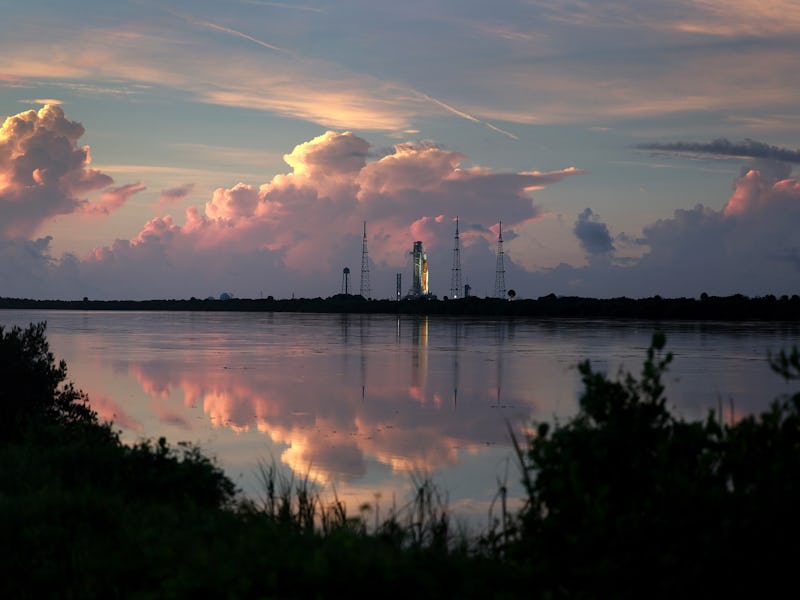Artemis I: NASA sets new launch date for Moon-bound rocket
After numerous delays, will it finally fly?

NASA’s long-gestating Artemis I mission may have flubbed its first launch attempt — but in a press conference Tuesday, August 30, the agency set a fresh date for the Moon-bound mission no one had expected.
After flagging August 29, September 2, and September 5, NASA has rescheduled the SLS launch date and time to Saturday, September 3 at 2:17 p.m. Eastern.
After 2:17 p.m. hits, the agency has a 2-hour launch window to get the massive Space Launch System rocket airborne. But before it starts the clock, NASA has to overcome two hurdles to set Artemis I on a path to the Moon.
1. It has to successfully fuel the SLS.
2. The SLS has to withstand Florida’s unpredictable weather.
Both nature and machinery scuppered the Agust 29 launch attempt.
How NASA plans to fix Artemis I’s issues
To tackle the first problem, NASA thinks it has a fix. Monday’s launch attempt came under weather that delayed the start of fueling. It then ran into a series of further obstacles: The tail service mast umbilical, which connects rocket stages, leaked hydrogen fuel. Similar issues were noted during the rocket’s four wet dress rehearsals.
Then NASA hit another snag. The RS-25 engines, which began service as part of NASA’s Space Shuttle fleet, couldn’t be cooled to the right temperature. The core stage — the longest and most powerful stage of the rocket responsible for lifting it off the ground and into space — ran into vent valve problems.
After sleeping on it, the Artemis team has moved a second flight attempt from Friday, September 2, to Saturday, September 3. The team will also change the launch procedure, in the hope that these alterations will enable the rocket to fly.
“If we’d have gotten this data in wet dress rehearsal number four, we’d be doing exactly what we’re doing right now,” John Honeycutt, Space Launch System program manager, said in the press conference.
NASA illustration of life at the lunar South Pole.
Artemis I: Vehicle and mission details
The Space Launch System (SLS), the largest rocket since the Apollo-era Saturn V, is just one component of the craft making up the Artemis I mission, the other of which is the Orion capsule. Both are part of NASA’s long-time human exploration programs and both have seen numerous changes over the years to their design, purpose, and scope. But finally they seem to have found a home in Artemis.
Artemis I is a test-run for the larger Artemis program, an ambitious slate of trips to the Moon taking place at first in three stages.
The first, Artemis I, involves NASA taking an uncrewed Orion capsule and SLS upper stage around the Moon before returning to Earth after a 42-day mission. This will prove that the SLS and Orion are safe for human use, as well as testing several key technologies (and running a few science experiments, too).
NASA will then take the data gathered during Artemis I and apply it to Artemis II, which will send a group of astronauts around the Moon and back to Earth, but without landing on the lunar surface. It’s a strictly fly-by mission, paving the way toward Artemis III, which will enable NASA astronauts to touch down on the Moon for the first time since 1972. Those missions will launch in 2024 and 2025, respectively, if all goes according to plan.
From there, the Artemis program will expand toward a full-scale lunar program, building up the agency’s presence on our nearest celestial neighbor. The South Pole — where Artemis III will land — has a stable temperature range and water ice, making it an ideal place for a lunar habitat.
That makes Saturday’s flight critical to the future in space NASA envisions. Let’s hope it works.